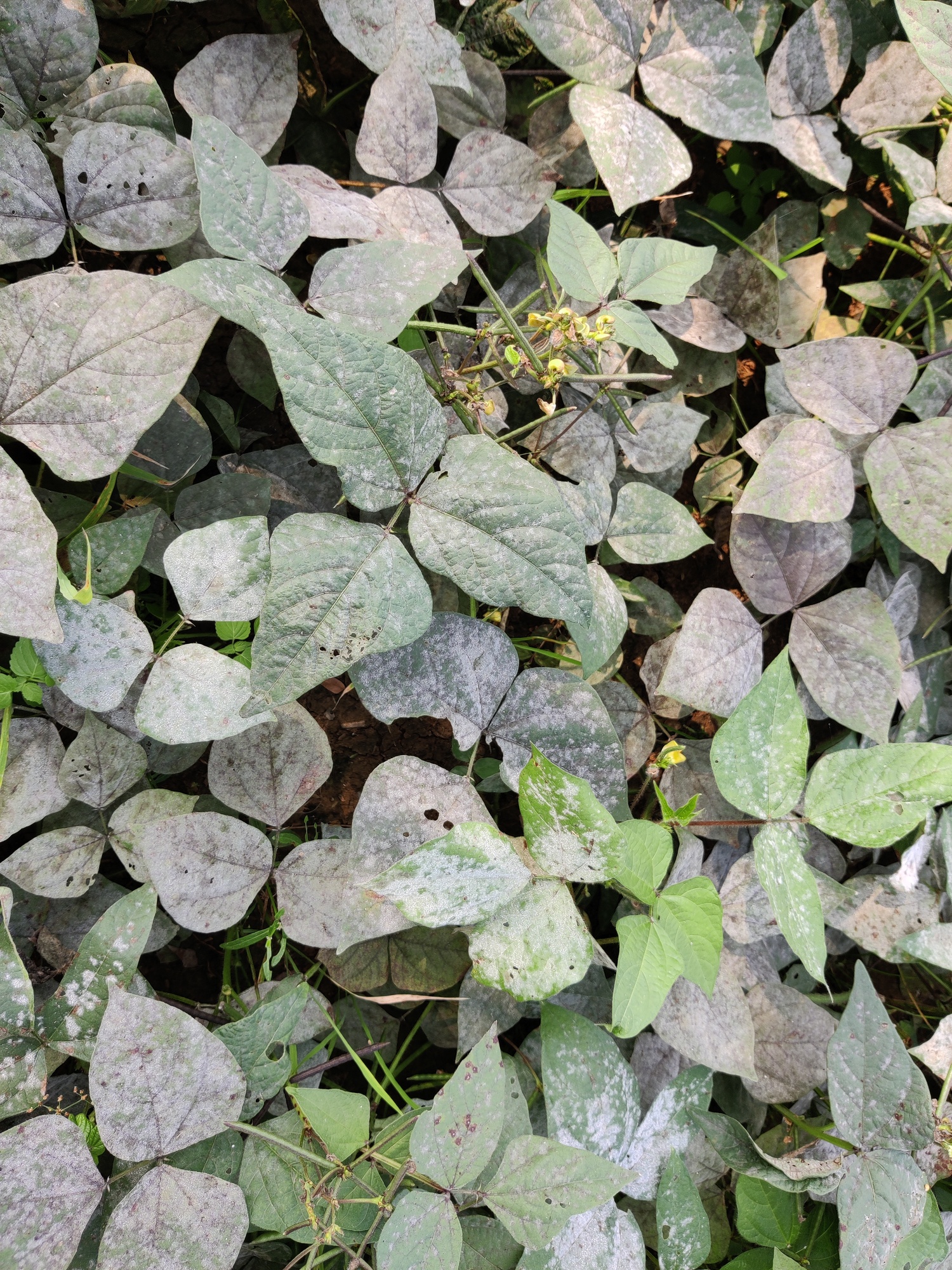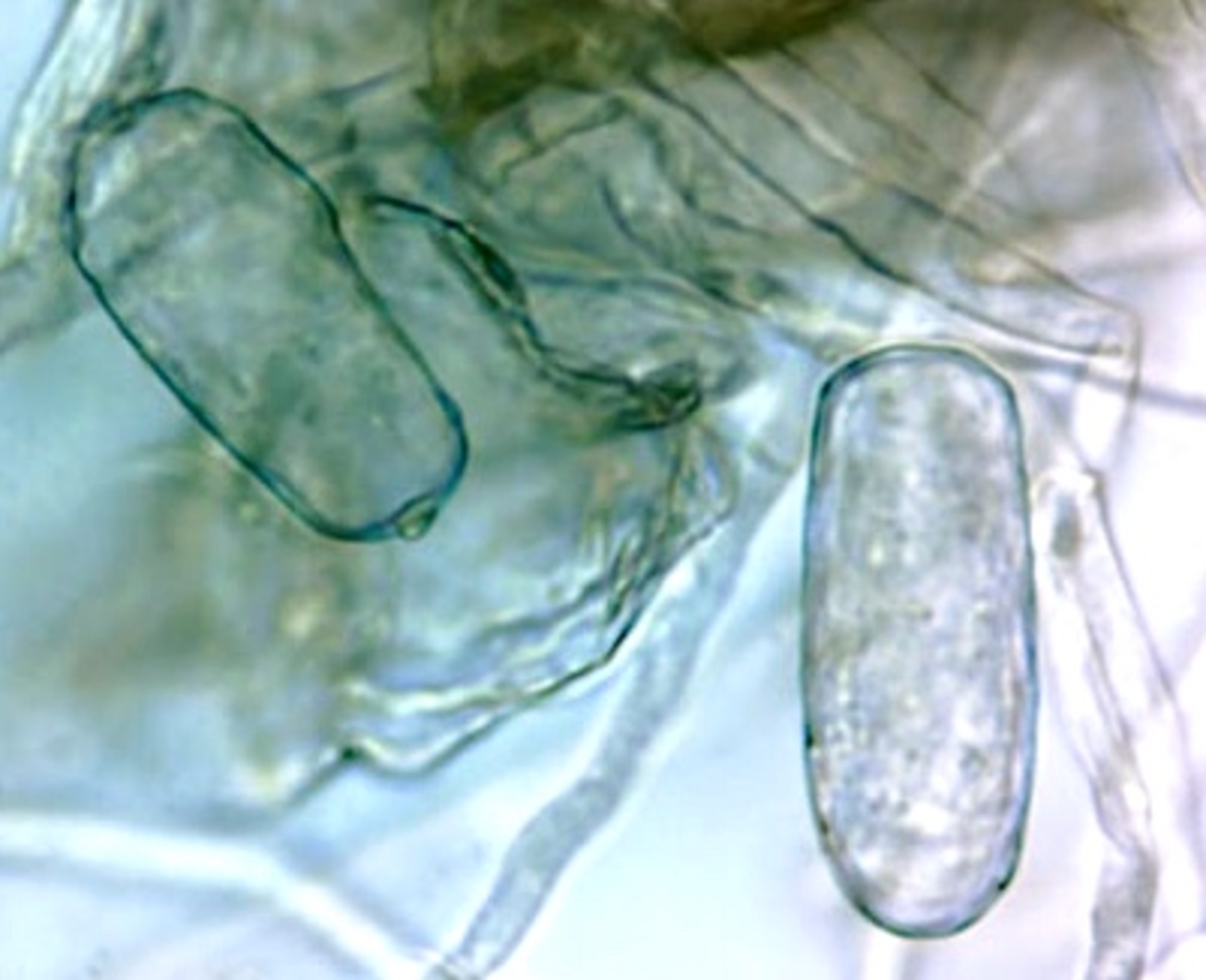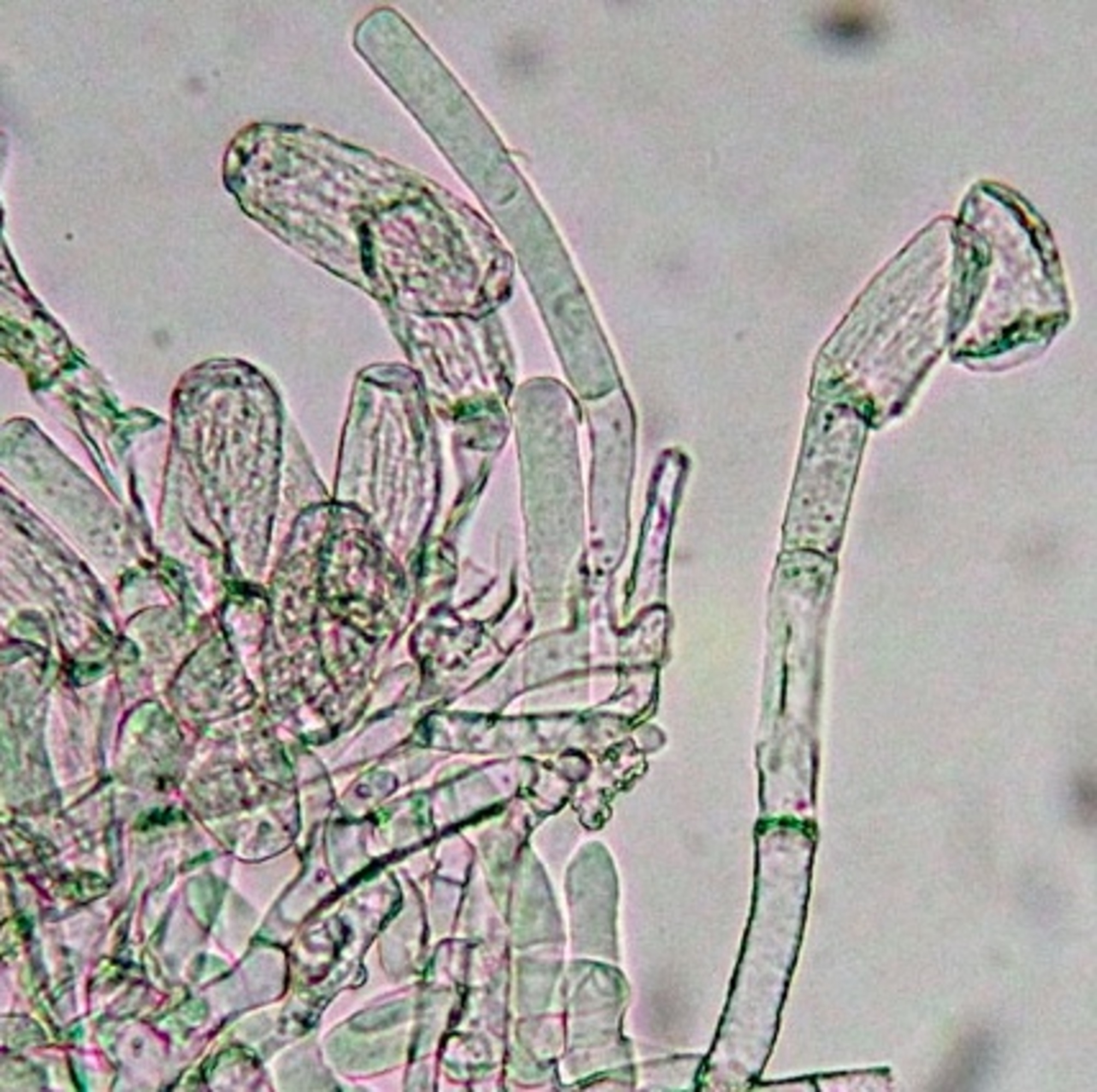Agricultural crops :: Pulses :: Blackgram
Powdery Mildew: Erysiphe polygoni
| Field diagnostic symptoms |
-
Powdery spots/patches on leaves, petiole, stem and pods
- Diseased leaves turn black and finally shed
-
Malformed pods with few ill filled seeds
 Powdery mildew infected plants
Powdery mildew infected plants
Causal agent
Erysiphe polygoni
- Fungus: Oidium type and ectophytic
- Condiophores - simple, erect, bear chained conidia
- Conidia - hyaline, thin walled, elliptical/ barrel shaped/ cylindrical and single cell
-
Chasmothecia contain 4-8 asci and each ascus contains 3-8 ascospores
  Conidiophores and conidia
Conidiophores and conidia- Survival: Chasmothecia in the infected plant debris
- Primary spread: Ascospores from perennating chasmothecia
- Secondary spread: Air-borne conidia
- Rain splash
Favourable conditions
- Temperature: 22 to 26°C
- Warm humid weather
- Relative humidity: 80 – 88 %
- Severe during late kharif and rabi seasons
Integrated disease management
- Remove and destroy infected debris
- Spray NSKE @ 5% or neem oil @ 3% twice at 10 days interval
- Spray Eucalyptus leaf extract @ 10% at initiation of disease and 10 days later
- Spray any one of the following fungicides at initiation of disease and second spray at 15 days later.
Carbendazim 50 WP @500g/ha
Wettable sulphur 80 WP @ 1500g/ha
Propiconazole 25% EC @ 500ml/ha
Azoxystrobin 5.1%w/w +Tebuconazole 9.1% w/w+ Prochloraz 18.2 % w/w EC @ 1250ml/ha
Captan 70% + Hexaconazole 5% WP @ 750ml/ha
Sulphur 85% DP @ 15-20 kg/ha
|
|



